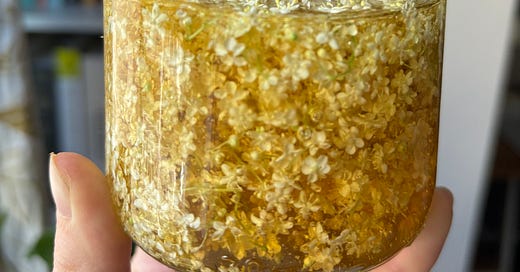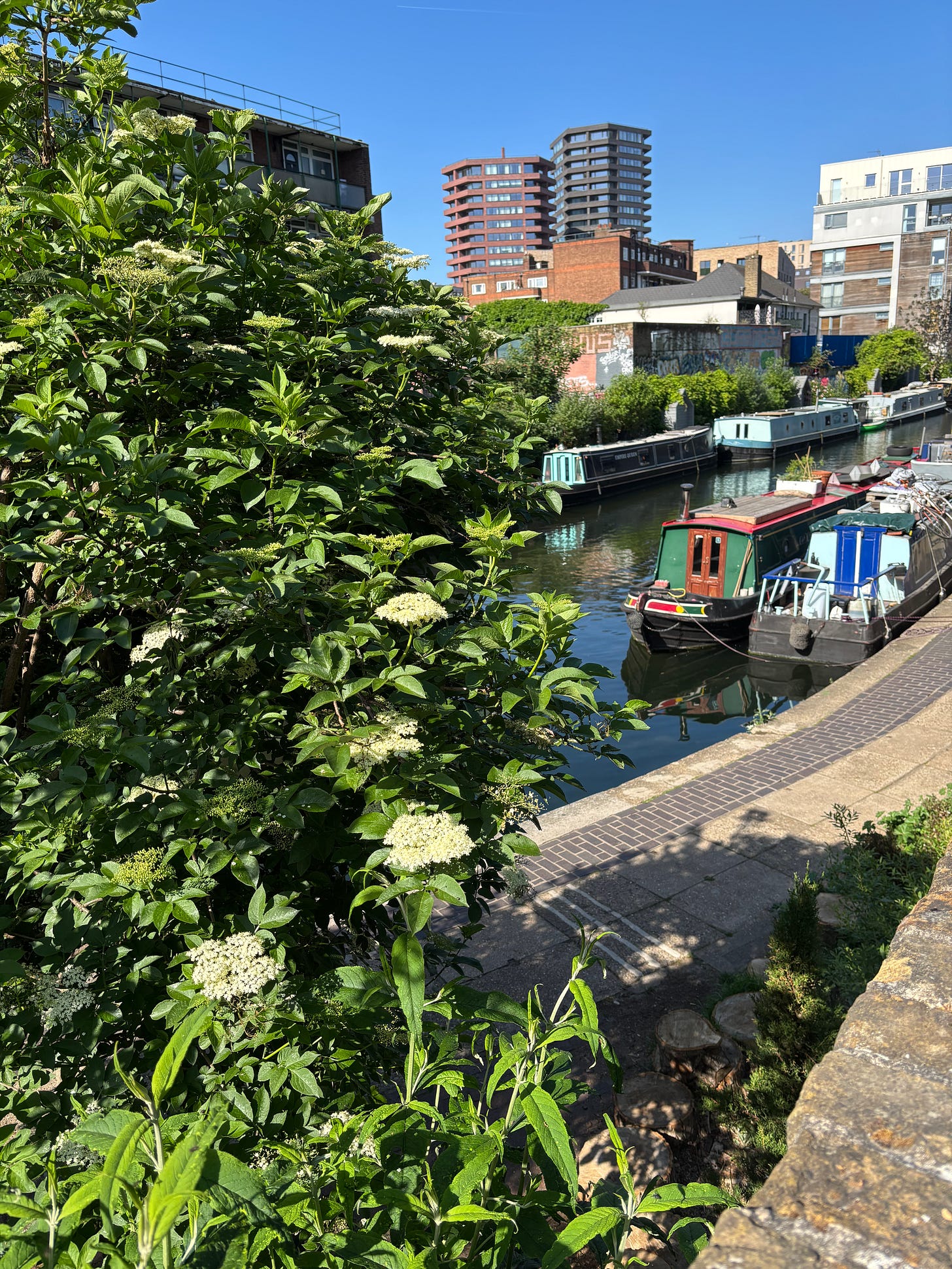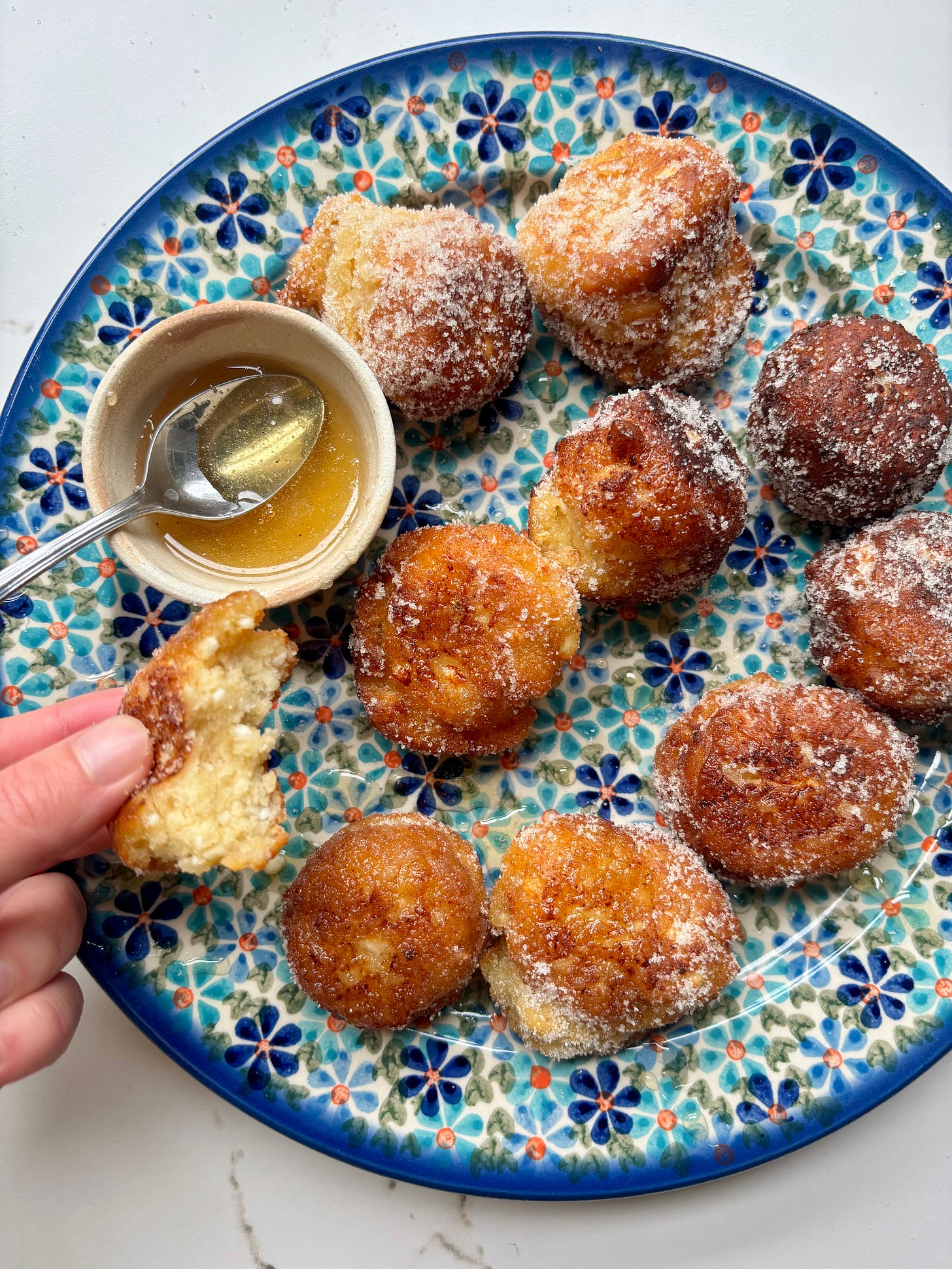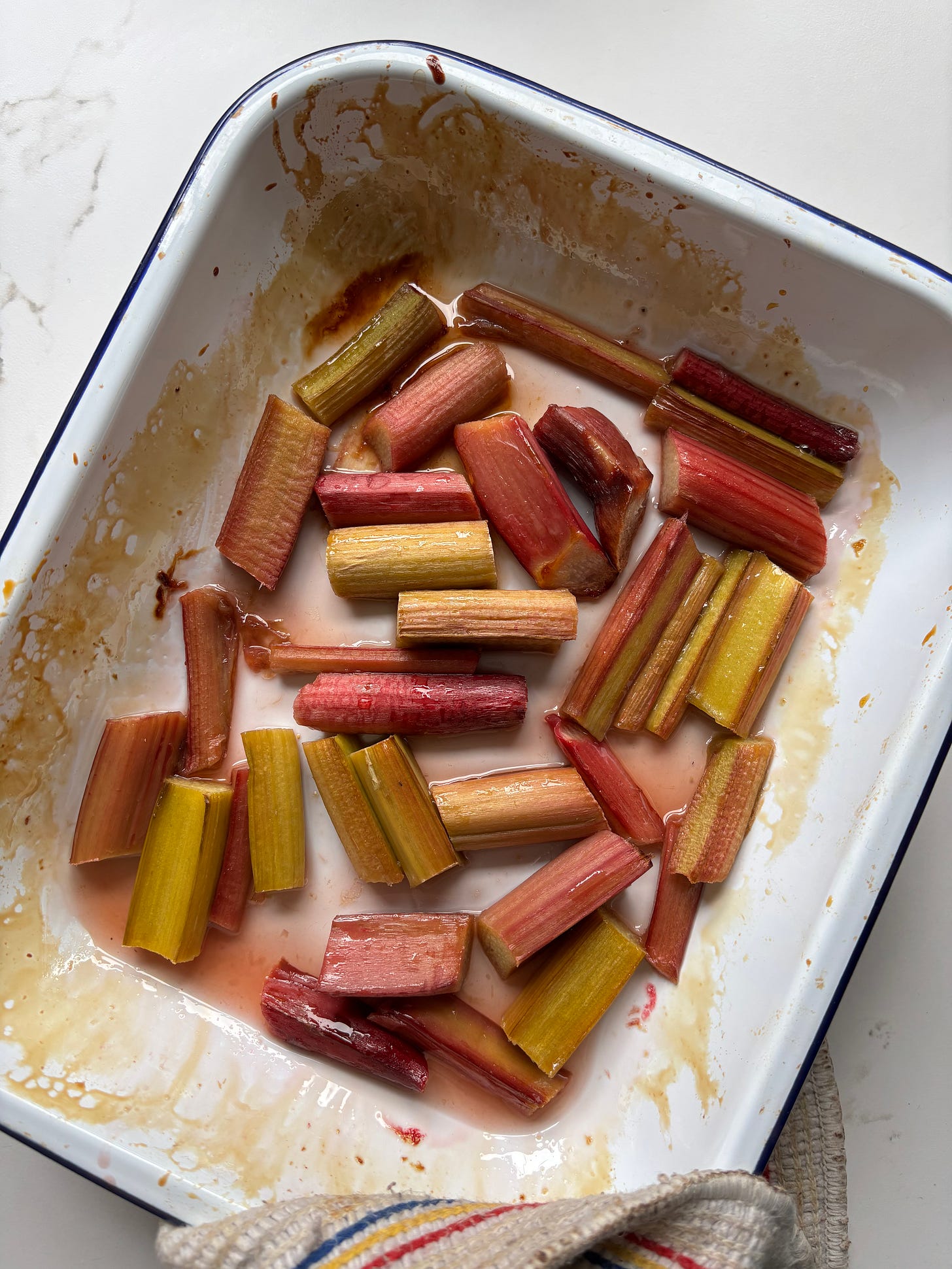I wouldn’t call myself a big forager, even though it’s something I’ve always aspired to be. I’ve been on several foraging courses and met plenty of experts. Every time I’ve felt invigorated to give it more of a go and promised myself that “this is the year” I’ll properly get into it. But the reality is, I get nervous when it comes to foraging anything past the basics. I can collect wild garlic without any concern, but I never trust myself to take home mushrooms for example. Elderflower, however, is safe territory. It’s pretty unmistakable and once you start to notice it, you realise it’s everywhere. In London it’s in parks, along the canals and in residential gardens. I often spot huge trees of it when on a train out of the city and think it’s a shame it’s out of reach (although great for the birds once they’ve turned to elderberries). The clusters of pretty white flowers smell delicately sweet and taste as fresh as the start of summer.
Elderflower cordial or champagne are the obvious go to recipes for the heads of flowers you collect, but this year I decided to make elderflower honey. It’s a very hands off recipe, just requiring a bit of time to infuse, and is a simple way to bring this floral flavour to all sorts of dishes. Below I’ve shared how to make elderflower honey and two easy ways to use it. The first is with roasted rhubarb – the best way to gently cook rhubarb in my opinion – that can be used for breakfast or dessert. And the second is in ricotta doughnuts, which are much quicker to make than regular doughnuts as they aren’t yeasted so don’t need to be left to rise. The elderflower honey adds a perfumed sweetness to the dough and makes the most incredible drizzle/dip to enjoy with them while warm.
Elderflower Honey
Infusing honey with elderflower is probably the easiest way to capture its delicate floral flavour, making it ideal for anyone short on time. It takes a week for the elderflower to impart its perfume so you’ll need to be patient there, but it’s worth the wait. The moisture and yeasts from the elderflower will also start a mild fermentation process which helps the honey take on that taste and changes the texture of the honey to become a little more runny.
About 15 heads of elderflower
2 x 300ml sterilised jars (I reuse old jam jars)
250-300ml raw honey (ideally clear rather than set honey)
1 Rinse the elderflower heads by gently lowering them into a bowl of water and swirling around for a few seconds. Lift out of the water, allowing the excess to drip away, then leave to dry face-down on a tea towel.
2 Once dry, pick the flowers from the elderflower and pack them in a jar. Pour over the honey and stir to combine. Screw on the lid and leave to infuse and lightly ferment for about 1 week.
3 Strain the honey through a sieve into a second jar to remove the flowers. Store the honey in a cool dry place. It’s delicious in salad dressings or spread onto hot buttered toast, or use it in the recipes below.
TIPS
Sterilise the jars used by washing in hot soapy water then drying in a low oven, or put them through a dishwasher cycle.
Elderflower is at its most open just after rain, so if you can, pick it after a shower.
You can eat the honey while the elderflowers are still inside as the flowers are edible, but texturally they can be a bit papery so it’s best to remove them after a week.
Ricotta and elderflower honey doughnuts
These doughnuts take minutes to stir together and are quick to cook, making them a great last minute dessert or afternoon treat. Ricotta gives the light fluffy texture, without the need to add yeast and leave them to rise. Rolled in sugar while warm then dipped in elderflower honey, it’s hard to resist the whole plate.
Makes about 12
1 medium free-range egg
150g ricotta
2 tbsp elderflower honey, plus extra to serve
100g organic self-raising white flour (or 100g spelt flour plus ½ tsp baking powder)
30g golden caster sugar
About 300ml sunflower oil, for frying
1 Crack the eggs into a mixing bowl, lightly beat, then stir in the ricotta and elderflower honey. Fold in the flour to create a dough. Divide the dough into 12, rolling each piece into a ball between the palms of your hands. Shake the sugar onto a plate and set aside.
2 Heat the oil in a small pan over a medium heat until a breadcrumb dropped in sizzles and turns golden within 30 seconds. Use a slotted spoon to carefully lower a few of the doughnuts into the oil. Cook for 2 minutes until golden and puffed up a little, then turn over and cook for another minute or two on the other side. Lift the cooked doughnuts out of the fryer with a slotted spoon then drop into the sugar and roll to coat the doughnut. Repeat with the remaining doughnuts.
3 Drizzle the doughnuts with elderflower honey or serve alongside for dipping. These are best eaten while fresh and warm.
TIPS
If you don’t want to fry the doughnuts, you can cook them in an air fryer at 200°C. Add them to the air fryer basket in a single layer with plenty of space between each (cook in batches if needed) and cook for 6-7 minutes, turning over halfway, until golden and crisp.
Elderflower honey roasted rhubarb
Gently roasting rhubarb means the stems become tender while still holding their shape. This recipe will work with any honey but the subtle floral note of the elderflower is great with tart rhubarb.
Serves 4-6
300g rhubarb
3 tbsp elderflower honey
Heat the oven to 180°C fan. Cut the rhubarb into 3cm lengths and add to a roasting tin in one even layer. Drizzle over the elderflower honey. Cover with foil and roast for 15 minutes, then uncover and roast for another 10 minutes, until the rhubarb is tender but holding its shape. Enjoy warm or leave to cool in the dish then scoop into a container, with the juices, and keep in the fridge for up to a week. It’s delicious spooned onto yogurt with granola for breakfast or with ice cream as a dessert.
Mindful mentions
Honey Pots // There’s quite a big difference between the regular squeezy stuff you find in the supermarket and real honey (often the former is laced with sugar syrup). I commissioned a guide to buying honey for Delicious last year and it’s a very interesting read. Take a look here. My main takeaway is to find locally sourced honey where you can rely on it coming from one hive where the bees are cared for and the honey has complexity of flavour.
Bean Workshop // I am hosting a workshop with my friend and brilliant nutritional therapist, Sam Hamrebtan, at OmVed Gardens in North London on Sunday 22nd June. We will be sharing the power of beans, showing you how to create nutritious, flexible and waste-reducing recipes with beans. Tickets cost just £25 and you’ll get to explore the gardens and new exhibition at OmVed as well as enjoy some tasty food. Find out more and book tickets here.









